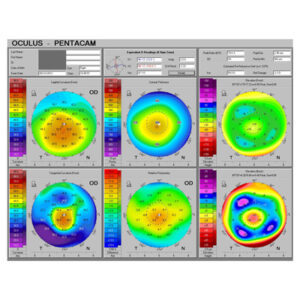Glaucoma
September 2009
by Tony Realini, M.D.
How we sleep can raise or lower IOP
Patients with glaucoma often ask what they can do to favorably impact their disease. These patients are eager to engage in beneficial activities and to avoid detrimental activities to save their optic nerve from glaucoma. Unfortunately, most of glaucoma’s known risk factors are not modifiable—such as age, race, and family history. In glaucoma management, there is little credible data supporting any role of nutritional supplements, avoidance of certain exposures such as caffeine or smoking, or alternative interventions such as acupuncture. Doctors’ standard answer is usually to encourage patients to continue using their medications as prescribed and to keep their follow-up appointments faithfully.
Some new research presented at the May 2009 annual meeting of the Association for Research in Vision and Ophthalmology, Ft. Lauderdale, Fla., suggests that there may be a new modifiable risk factor within the patient’s ability to control: sleeping position.
The supine effect
“Previous studies have established that there is an increase in IOP when patients change their position from upright, or standing, to supine, or lying down,” said Habeeb Ahmad, M.D., State University of New York-Downstate, Brooklyn, N.Y. “We spend about one-third of our lives in the sleeping position,” he said, which for most of us is in the lying-down position.
“In glaucomatous eyes, which may be exquisitely sensitive to even mild elevations in IOP, the hours spent in the supine position while sleeping may represent a period of increased progression of optic nerve damage,” he said. This IOP elevation can be significant. “IOP has been shown to rise by as much as 6 mmHg when lying down in both normal subjects and glaucoma patients,” said Tariq Alasbali, M.B.B.S., University of Toronto, Toronto. “This supine IOP increase can possibly play a role in the progression of glaucoma.”
Recognizing the potential for an inexpensive and non-invasive intervention, Dr. Habeeb and his colleagues at SUNY-Downstate conducted a study “assessing whether elevating a patient’s upper body from supine to 45 degrees results in an appreciable decrease in IOP compared to the supine position.”
Heads up lowers IOP
A mixed group of 64 subjects with and without glaucoma were placed in the supine position for 10 minutes, after which their IOP was measured using the Tono-Pen (Reichert, Depew, N.Y.). They were then shifted to a 45-degree upright position for an additional 10 minutes, after which IOP was measured again. IOP was measured three times in each position, and the average for each position was calculated.
“We found that the mean IOP in right and left eyes decreased by 1.3 mmHg and 1.7 in the group when changing from supine to the 45-degree position,” he said. “In the subset of subjects with glaucoma, the mean IOP decrease in right and left eyes was 1.9 mmHg and 1.5 mmHg.”
“Relative to their baseline IOP, this represented a 10 to 15% IOP reduction associated with the change in position from supine to 45 degrees in both glaucomatous and non-glaucomatous eyes,” said Dr. Habeeb. “And this costs nothing.”
He noted that only the upper body need be elevated to derive this IOP benefit. “This is the equivalent of sleeping with three pillows,” he said.
Confirmation
Dr. Alasbali and colleagues also conducted a study to evaluate the effect of sleeping position on IOP in glaucoma. “If lying supine increases IOP,” he explained, “then sleeping in a heads-up position may reduce this IOP rise and may possibly prevent progression of glaucoma.”
In Dr. Alasbali’s trial, 17 subjects with progressive normal-tension or primary open-angle glaucoma underwent a pair of nocturnal IOP assessments a week apart. At the first overnight visit, IOP was measured every two hours from 10 p.m. to 6 a.m. with patients in the normal supine sleeping position. One week later, the same evaluation was performed but with patients sleeping in a 30-degree upright position. IOP at each time point was the mean of two measurements obtained with the Tono-Pen.
“In our sample, nocturnal IOP was lower by a mean of 3.2 mmHg in the 30-degree elevated position compared to the supine position,” Dr. Alasbali said. “Sixteen of the 17 patients had lower mean nocturnal IOP in the 30-degree upright position compared to the supine position. One third of the patients experienced a 20% or greater reduction in mean nocturnal IOP just by changing their sleeping position.”
He noted that a 30-degree sleeping position can generally be accomplished using just two pillows.
Clinical application
These findings are intriguing but will require confirmation in larger clinical trials. In the meantime, the possibility of lowering IOP by up to 3 mmHg or 20% simply by changing sleeping position is highly attractive as an adjunct to traditional medical or surgical IOP-lowering therapy. The magnitude of the effect is comparable to the anticipated effect of adjunctive medical therapy or laser trabeculoplasty, costs nothing, and has no appreciable risk.
Editors’ note
Drs. Ahmad and Alasbali have no financial interests related to their comments.
Contact information
Ahmad: habeeb.ahmad@downstate.edu
Alasbali: dr.alasbali@gmail.com



